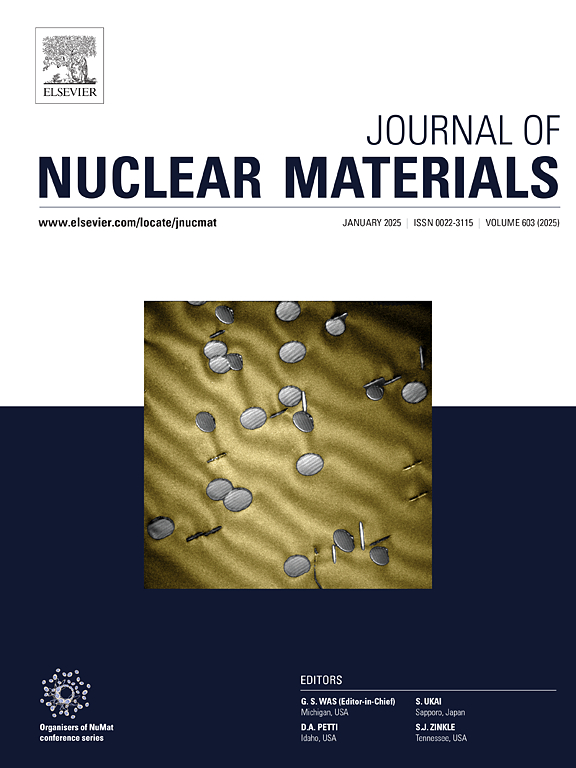A peridynamic model for oxidation of T91 steel in liquid lead-bismuth eutectic
IF 2.8
2区 工程技术
Q3 MATERIALS SCIENCE, MULTIDISCIPLINARY
引用次数: 0
Abstract
In this paper, we present a reaction-diffusion peridynamic model for the oxidation of T91 steel in liquid lead-bismuth eutectic (LBE). By integrating oxidation kinetics with diffusion dynamics, our model is applicable to a broad range of high-temperature oxidation processes. Validation against experimental data of oxide scale growth for T91 steel in oxygen-saturated LBE at 400–550°C and up to 13,000 h confirms its accuracy. Furthermore, we demonstrate the model's enhanced accuracy relative to traditional formula-based kinetic models. The new framework is utilized to investigate the influence of temperature and oxygen concentration on oxide scale evolution, indicating that elevated oxygen concentrations and temperatures significantly accelerate oxidation. Additionally, we explore the oxidation behavior of T91 steel with a non-uniform surface and oxide scale cracks, revealing that the outer magnetite oxide scale grows more rapidly than the inner Fe-Cr spinel scale in concave regions. Our model captures the transition of the oxide scale from an irregular to a flat, uniform morphology, aligning with experimental observations. This model demonstrates considerable potential for simulating high-temperature oxidation in complex geometries, including irregular surfaces and cracks, across various environmental conditions.
求助全文
约1分钟内获得全文
求助全文
来源期刊

Journal of Nuclear Materials
工程技术-材料科学:综合
CiteScore
5.70
自引率
25.80%
发文量
601
审稿时长
63 days
期刊介绍:
The Journal of Nuclear Materials publishes high quality papers in materials research for nuclear applications, primarily fission reactors, fusion reactors, and similar environments including radiation areas of charged particle accelerators. Both original research and critical review papers covering experimental, theoretical, and computational aspects of either fundamental or applied nature are welcome.
The breadth of the field is such that a wide range of processes and properties in the field of materials science and engineering is of interest to the readership, spanning atom-scale processes, microstructures, thermodynamics, mechanical properties, physical properties, and corrosion, for example.
Topics covered by JNM
Fission reactor materials, including fuels, cladding, core structures, pressure vessels, coolant interactions with materials, moderator and control components, fission product behavior.
Materials aspects of the entire fuel cycle.
Materials aspects of the actinides and their compounds.
Performance of nuclear waste materials; materials aspects of the immobilization of wastes.
Fusion reactor materials, including first walls, blankets, insulators and magnets.
Neutron and charged particle radiation effects in materials, including defects, transmutations, microstructures, phase changes and macroscopic properties.
Interaction of plasmas, ion beams, electron beams and electromagnetic radiation with materials relevant to nuclear systems.
 求助内容:
求助内容: 应助结果提醒方式:
应助结果提醒方式:


